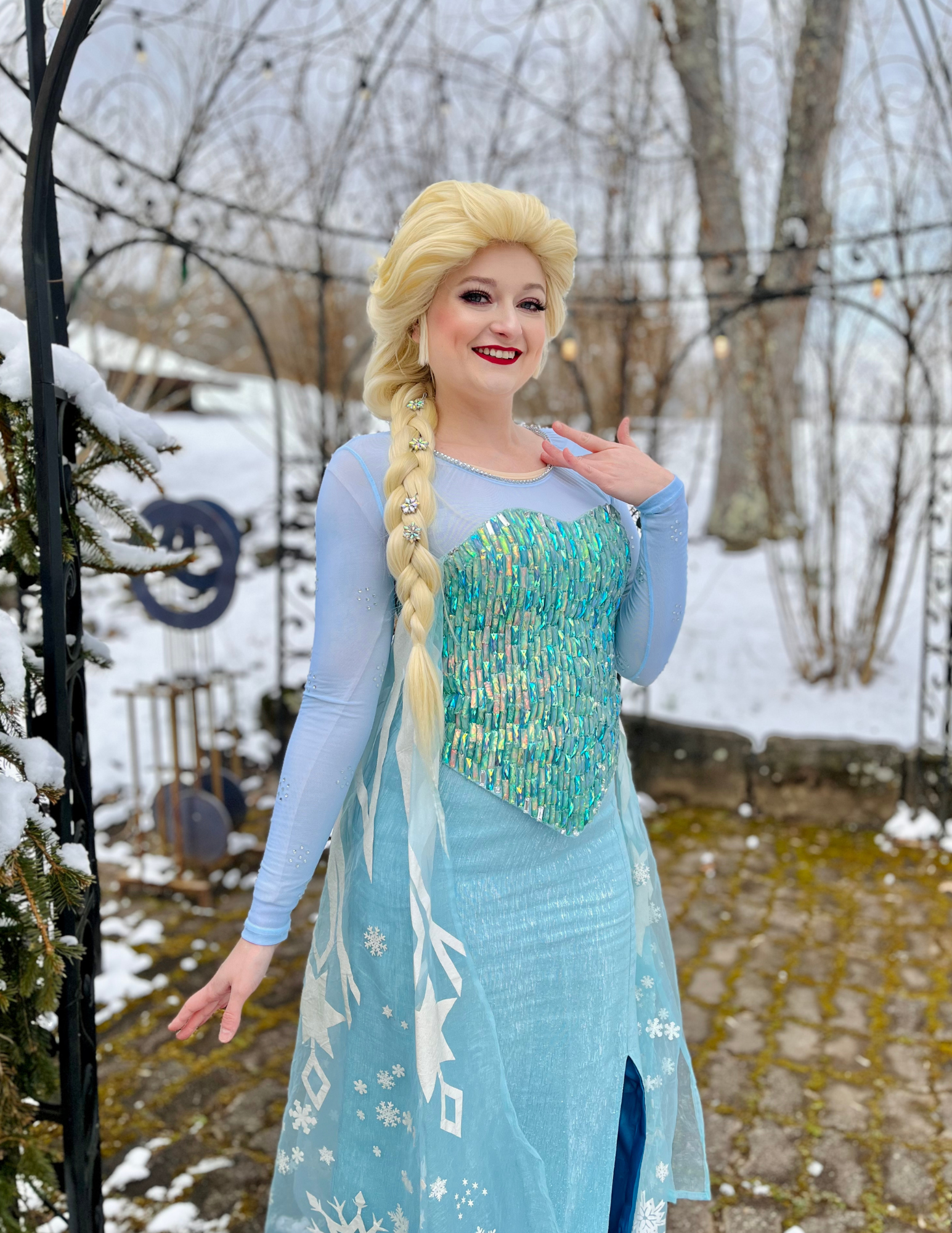This winter has been a rough one so far! While you may be feeling stir crazy with the kids home from school or stuck inside, we’ve got some fun ideas to spark your imagination!
Make it a themed day! Watch Frozen (or Frozen 2) and stay warm inside by playing Freeze Dance (we love playing to “Let it Go, Fixer Upper, and Some Things Never Change. Pause the music and players stand still), drink some hot chocolate, make snow cream, and hot ice!
Make Snow Cream
Thank you to Happy Hooligans for this recipe and directions!
Snow Cream Ingredients:
8-12 cups of fresh, white, new-fallen snow (a cup here in North America is 8 oz.)
300 ml can of sweetened condensed milk (10 ounces)
1 tsp vanilla
Large bowl
measuring cup
wooden spoon
freezer-proof container for storing your leftovers
ingredients for snow ice cream - snow, condensed milk and vanilla
How to Make Snow Ice Cream:
Fill a huge salad bowl with fresh snow. (10-12 cups)
Return inside and scoop about half of the snow into a smaller bowl.
Sprinkle a tsp of vanilla onto the snow.
Pour condensed milk over and snow and vanilla.
Drizzle half the condensed milk over top.
With the wooden spoon, fold the condensed milk and vanilla into the snow, kind of chopping, stirring and mixing to combine everything.
Transfer the whole mixture back into the big bowl of remaining snow, and add the rest of the condensed milk.
Science Experiment: Hot Ice
Thank you to Playdoh and Plato for this amazing idea!
You will need…
4 cups of white vinegar (acetic acid)
4 tablespoons of baking soda (sodium bicarbonate)
A pot
A glass measuring cup or mason jar (make sure it’s heat safe glass)
A dish
A spoon
Directions
Pour 4 cups of vinegar and pour it into a medium-sized pot.
Add 4 tablespoons of baking soda (one tablespoon at a time) to the pot.
The sodium bicarbonate (baking soda) and acetic acid (vinegar) will fizz, forming sodium acetate.
NOTE: The key is to add the baking soda slowly so it doesn’t erupt over the edges of your pot.
Stir the mixture until all the baking soda dissolved and stopped fizzing.
Boil the solution over medium-low heat for a little over an hour to remove the extra water.
The solution will reduce by about 75%. You will see white powdery crystals forming on the sides of the pot near the top of the solution.
NOTE: If you boil your solution at a higher temperature it may turn yellow-brownish but don’t worry, the experiment will still work!
Pour the concentrated sodium acetate into a glass pyrex measuring cup and place it in the fridge to cool (You can scrape a little bit of the dried sodium acetate powder off the inside of the pot to use later.)
After about 30-45 minutes, the solution was cool enough to turn into ice.
Grab a glass dish and placed a small pile of the sodium acetate powder from the pot in the center. This would act as a seed for the crystals to start forming.
Very carefully, take the cooled solution out of the fridge because any bump could start the crystallizing process.
Pour the solution very slowly into the pan and crystals will instantly start forming.
As soon as the clear liquid hit the plate white crystals would form like tiny fireworks. I continued to pour and the liquid crystallized forming a solid as soon as it touched the growing “ice”.
NOTE: This form of sodium acetate while non-hazardous can irritate skin and eyes just like vinegar can. So be careful when handling the crystal. Both of my kiddos ended up crumbling the crystal and didn’t have any reaction but I imagine it wouldn’t feel too good if your kiddo had a cut on his/her hands.
Once you are done creating and exploring the crystallized salt you can remelt it to use again and again.



